Key takeaways:
- Smart technology enhances building efficiency, sustainability, and user experience, fostering community engagement through interactive features.
- Key components include IoT devices for real-time data tracking, data analytics for optimizing building usage, and user interfaces for occupant interaction.
- Successful implementation involves thorough planning, selecting appropriate technologies, and providing extensive user training and support to enhance user experience.
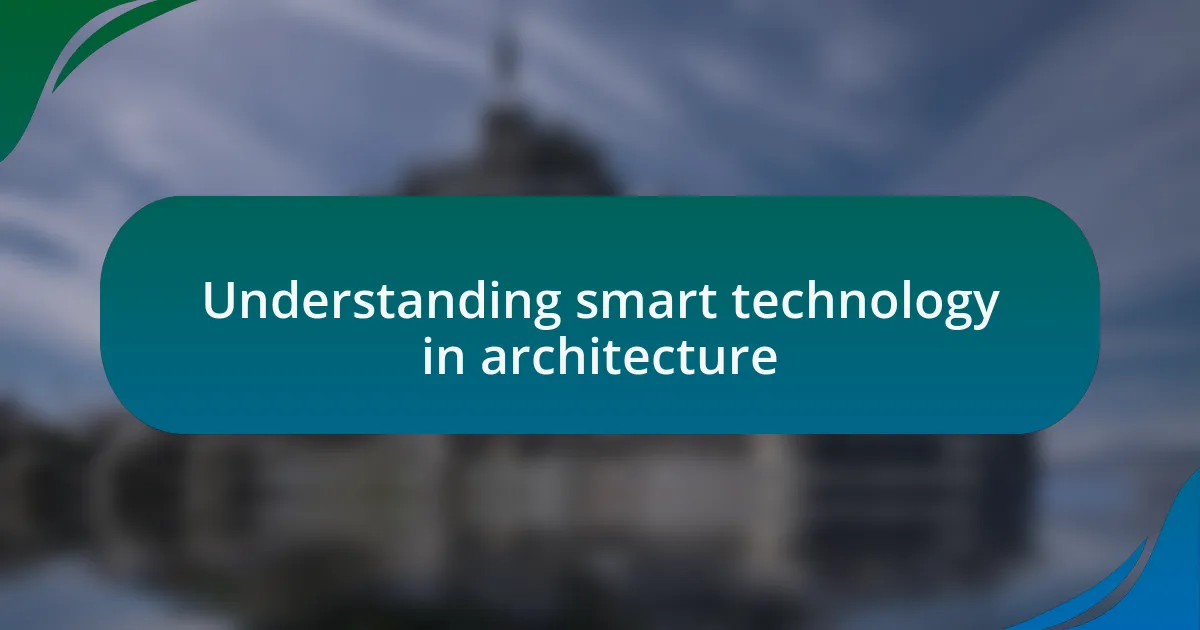
Understanding smart technology in architecture
Smart technology in architecture refers to the integration of advanced systems that enhance building efficiency, sustainability, and user experience. I remember the moment I first witnessed a skyscraper equipped with an intelligent building management system; it operated seamlessly, adjusting lighting and temperature based on real-time occupancy data. This fusion of technology and architecture not only maximizes resource use but also creates environments that adapt to the needs of their inhabitants.
One striking aspect of smart technology is its ability to foster a sense of community within urban environments. For example, I’ve seen how interactive displays in lobbies can provide real-time information on local events, fostering engagement among residents. Isn’t it fascinating to think about how a building can connect people not just physically, but socially too?
Moreover, smart technology isn’t just about convenience; it’s about responsibility. As I delve deeper into this field, I often ask myself how our designs can contribute to a sustainable future. Integrating renewable energy sources, like solar panels that communicate with the building’s energy systems, exemplifies this goal, transforming skyscrapers into self-sufficient entities that promote environmental stewardship.
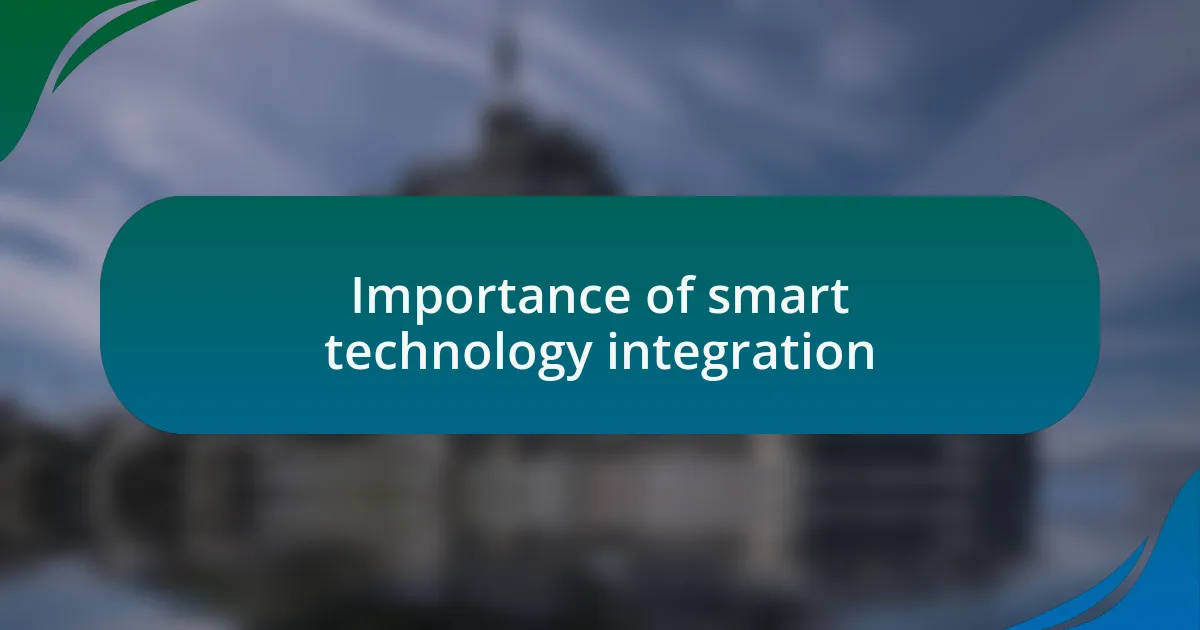
Importance of smart technology integration
Integrating smart technology into skyscraper design is not merely an enhancement; it’s a fundamental shift in how we approach urban living. I recall visiting a high-rise that used an AI-driven system to optimize energy consumption. Watching the lights dim automatically as the sun set made me realize that buildings could respond to their environment as intuitively as we do. It struck me that these technologies not only create efficiencies but also foster a harmonious relationship between the structure and its surroundings.
Another important aspect is how smart technology addresses the challenges of urban density. I’ve often thought about how cities today are bursting at the seams, and I believe intelligent management systems can significantly ease this congestion. Take, for instance, the integration of smart elevators that predict traffic flows—this innovation has improved accessibility and reduced wait times, allowing people to navigate these vertical cities with ease. Doesn’t it make you wonder how far we can push the boundaries of efficiency in our architectural practices?
Furthermore, the emotional impact of smart technology cannot be ignored. I remember a project where we incorporated ambient intelligence into common spaces, adjusting sound and lighting based on the time of day. Residents shared how these thoughtful adjustments made them feel more at home, creating a unique atmosphere that resonated with their daily lives. Isn’t it amazing to think that the right technology can evoke emotions, enhancing quality of life and well-being in skyscrapers?
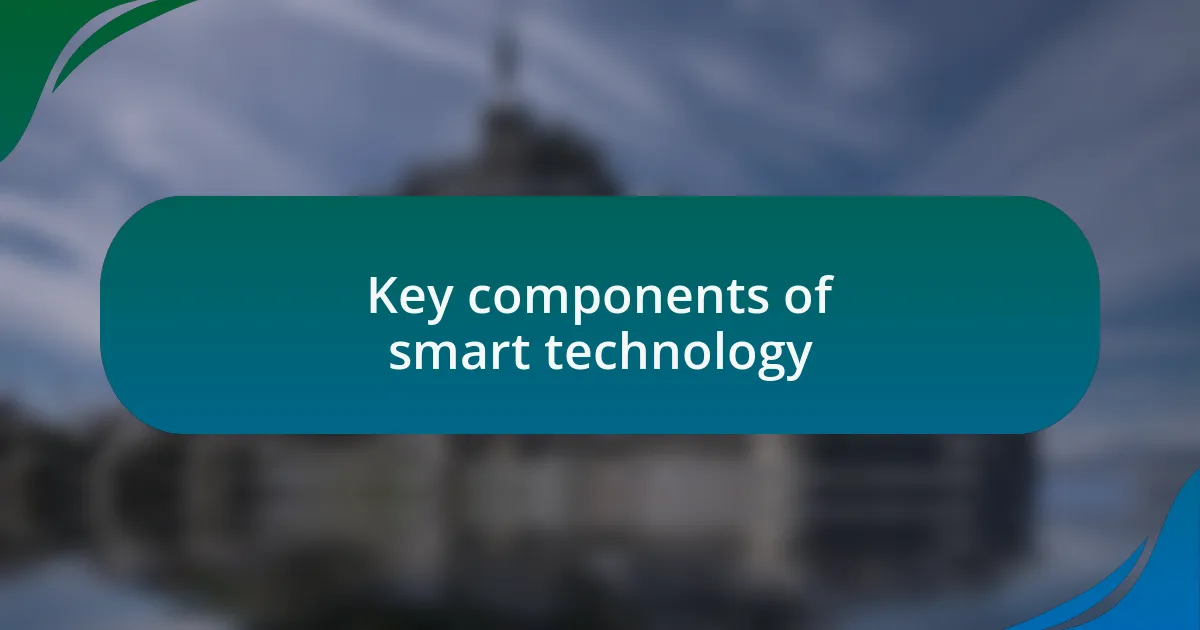
Key components of smart technology
Smart technology in skyscraper design revolves around a few key components that drive efficiency and connectivity. One significant element is IoT (Internet of Things) devices, which enable interconnectivity between various systems within the building. I vividly remember a project where sensors tracked temperature and air quality in real-time, adjusting the HVAC automatically. It was fascinating to see how this not only improved comfort but also reduced energy consumption—two birds with one stone!
Another crucial component is data analytics. In one of my previous projects, we utilized big data to monitor building usage patterns. By analyzing foot traffic and occupancy levels, we were able to optimize everything from lighting to security, creating a responsive environment for the occupants. It got me thinking—how can we leverage data to anticipate the needs of the people living and working in these towers?
Lastly, user interfaces play a vital role in engaging occupants with their environment. I recall working on a skyscraper equipped with a mobile app that allowed residents to control everything from climate settings to community events. It was rewarding to see how such features fostered a sense of ownership and community among the residents. Isn’t it incredible how technology can create bonds in what is often a concrete jungle?
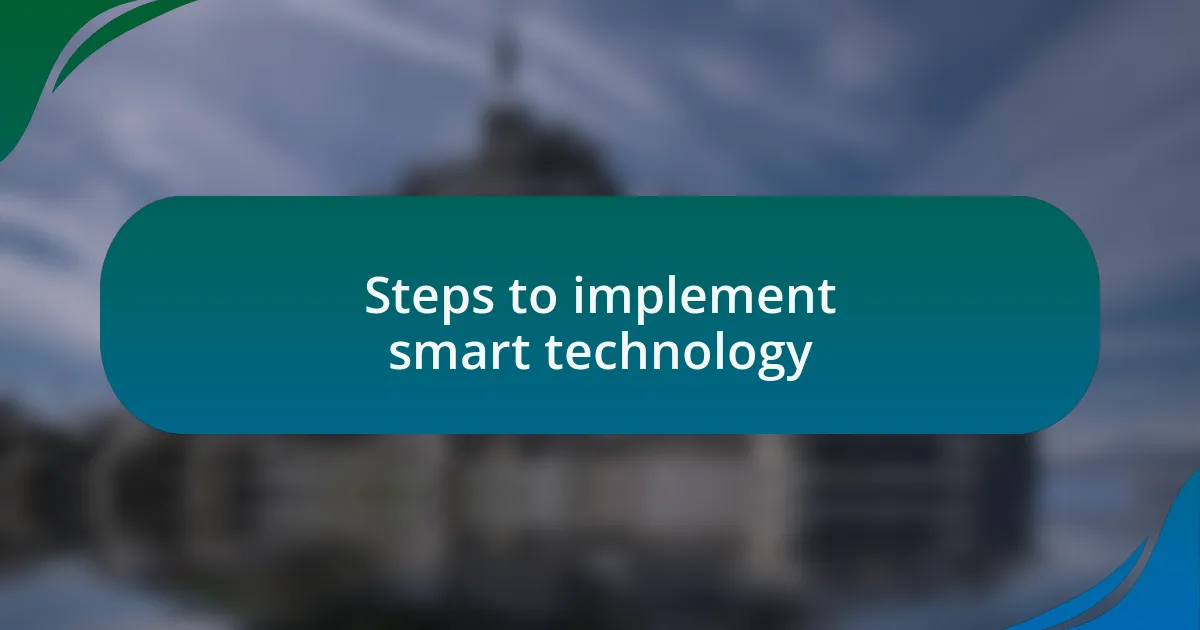
Steps to implement smart technology
Taking the first step in implementing smart technology in skyscrapers involves thorough planning and assessment of the specific needs of the building. In one project, we gathered a diverse team of engineers, architects, and stakeholders to map out the building’s technology requirements. This collaborative effort not only showcased different perspectives but also ensured that the solutions we developed were tailored to optimize both functionality and user experience.
Once the initial assessment is complete, it’s crucial to select the right technologies that align with the building’s objectives. I remember a time when we implemented advanced HVAC systems incorporating smart controls. This choice was pivotal in reducing operational costs and enhancing energy efficiency. It was thrilling to see real-time adjustments being made based on occupancy levels—what a remarkable transformation from traditional systems!
Finally, rigorous testing and user training can’t be overlooked. After installation, I often facilitated workshops with residents and building management to walk them through the smart features. Witnessing their excitement as they learned to control their environment with a simple swipe on their phones was exhilarating. It reminded me that technology is just a tool; how we engage with it truly shapes our experience within these towering structures. What better way to embrace change than to empower the people who live and work within?
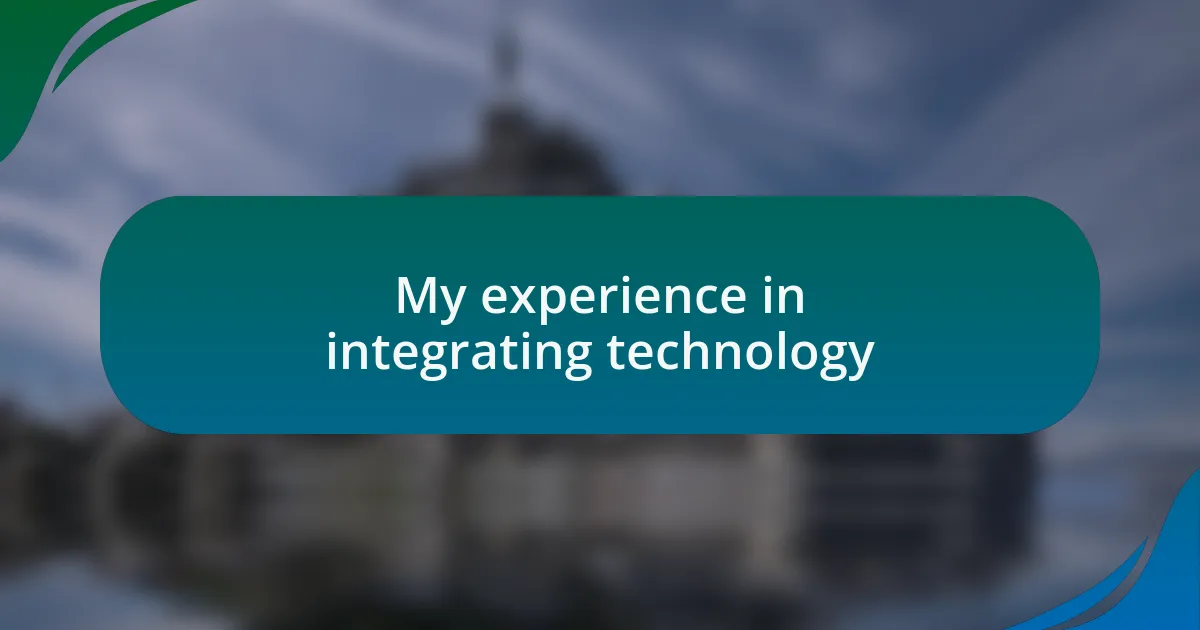
My experience in integrating technology
Integrating technology in skyscraper design has been both a challenge and an exhilarating journey for me. I recall a project where we used AI to optimize lighting in communal spaces. Watching the lights adjust seamlessly throughout the day based on natural light levels was like witnessing a dance of energy efficiency. It left me wondering how many other everyday practices we overlook that technology could enhance.
During another project, we experimented with augmented reality (AR) for virtual walkthroughs of the design. It was astonishing to see clients’ reactions when they could ‘walk’ through their future offices long before the first brick was laid. It made me appreciate the power of visualization in architecture; after all, how can one fully grasp the scale and ambiance of a space without stepping into it?
I’ve also had my share of hiccups while integrating smart systems. Once, a glitch in the integrated security system until solved caused quite a stir among the stakeholders. This experience taught me the importance of backup solutions and contingency plans. In retrospect, those moments of stress provided the greatest lessons—how crucial it is to be prepared and adaptable when working with cutting-edge technology.